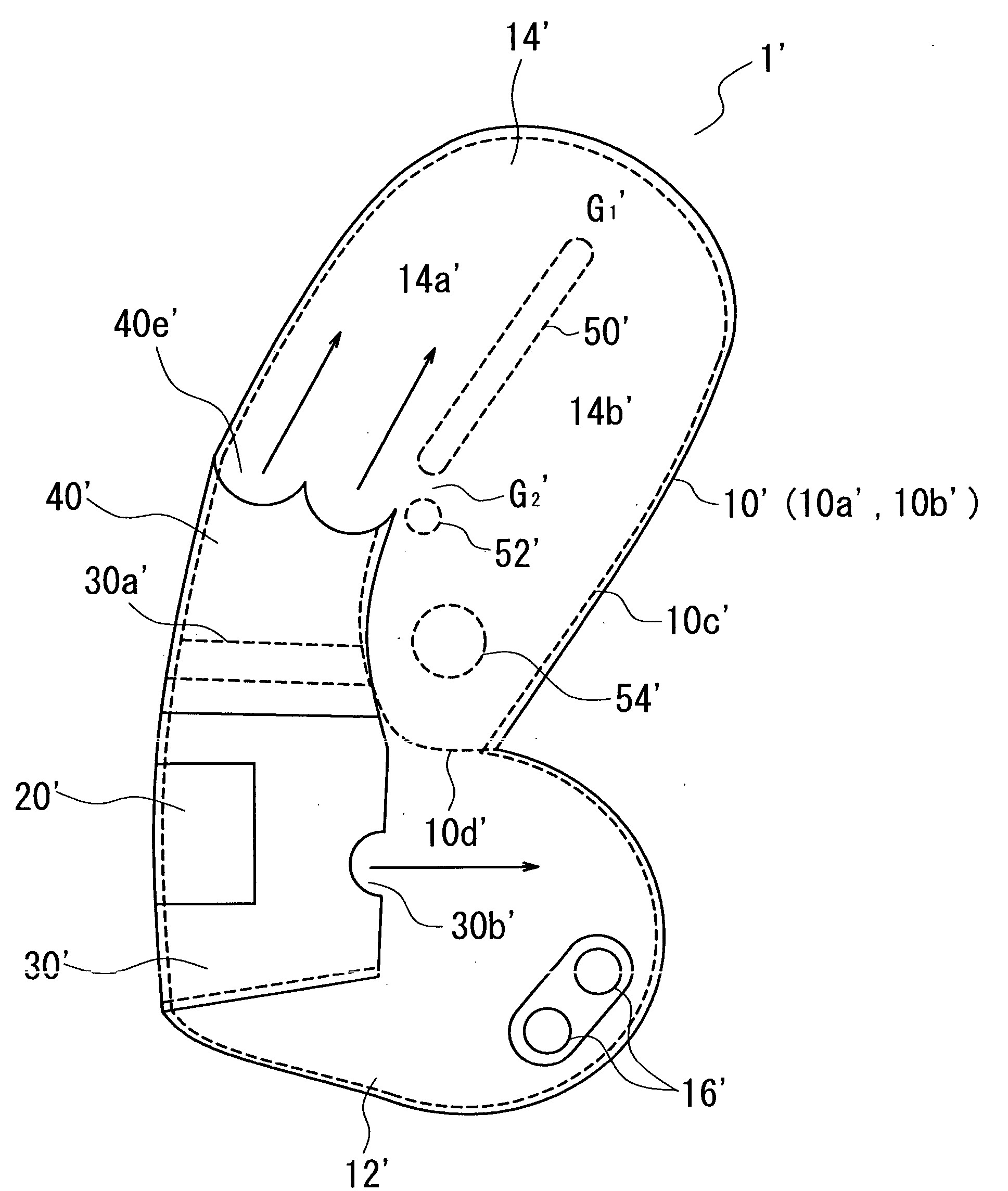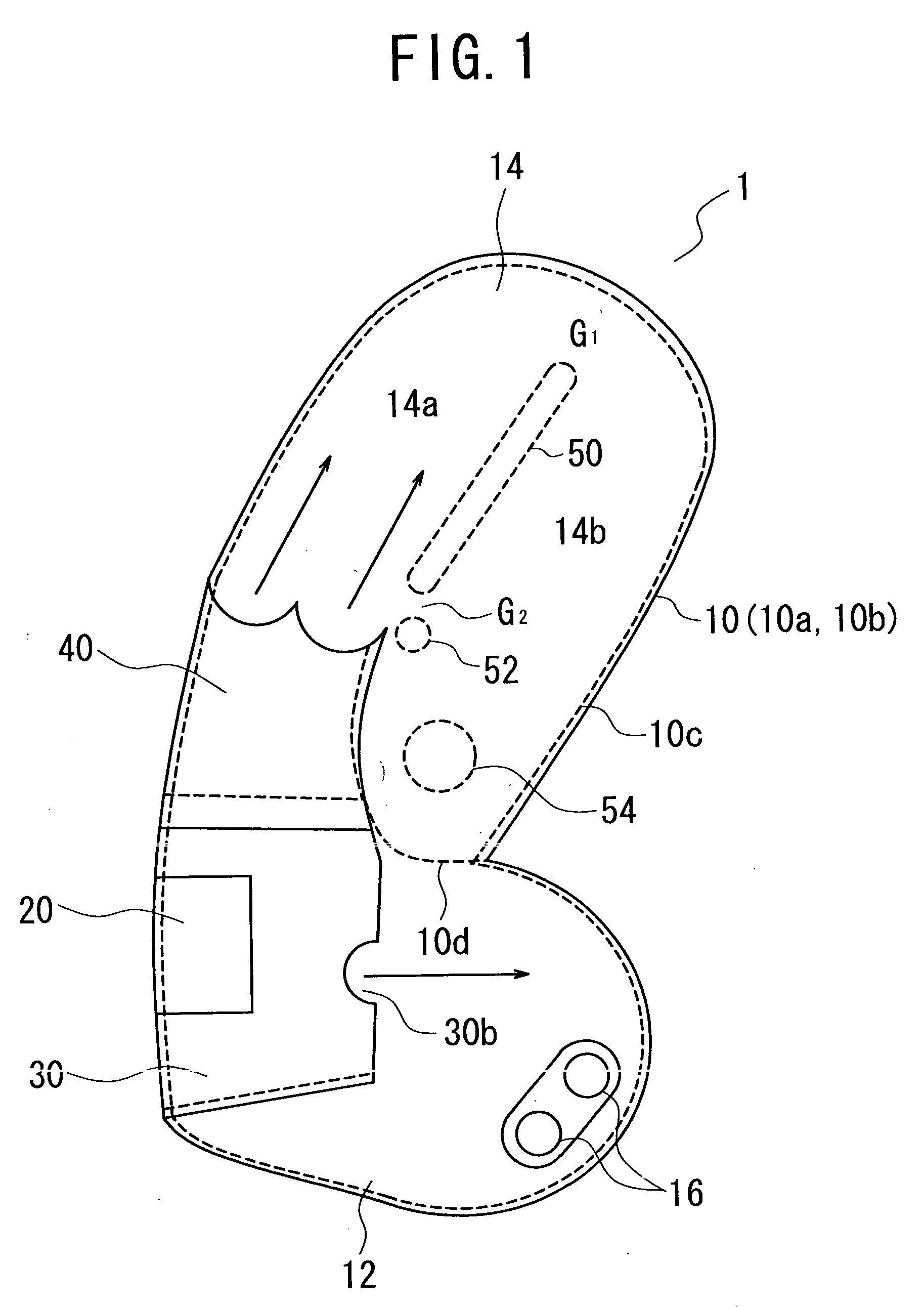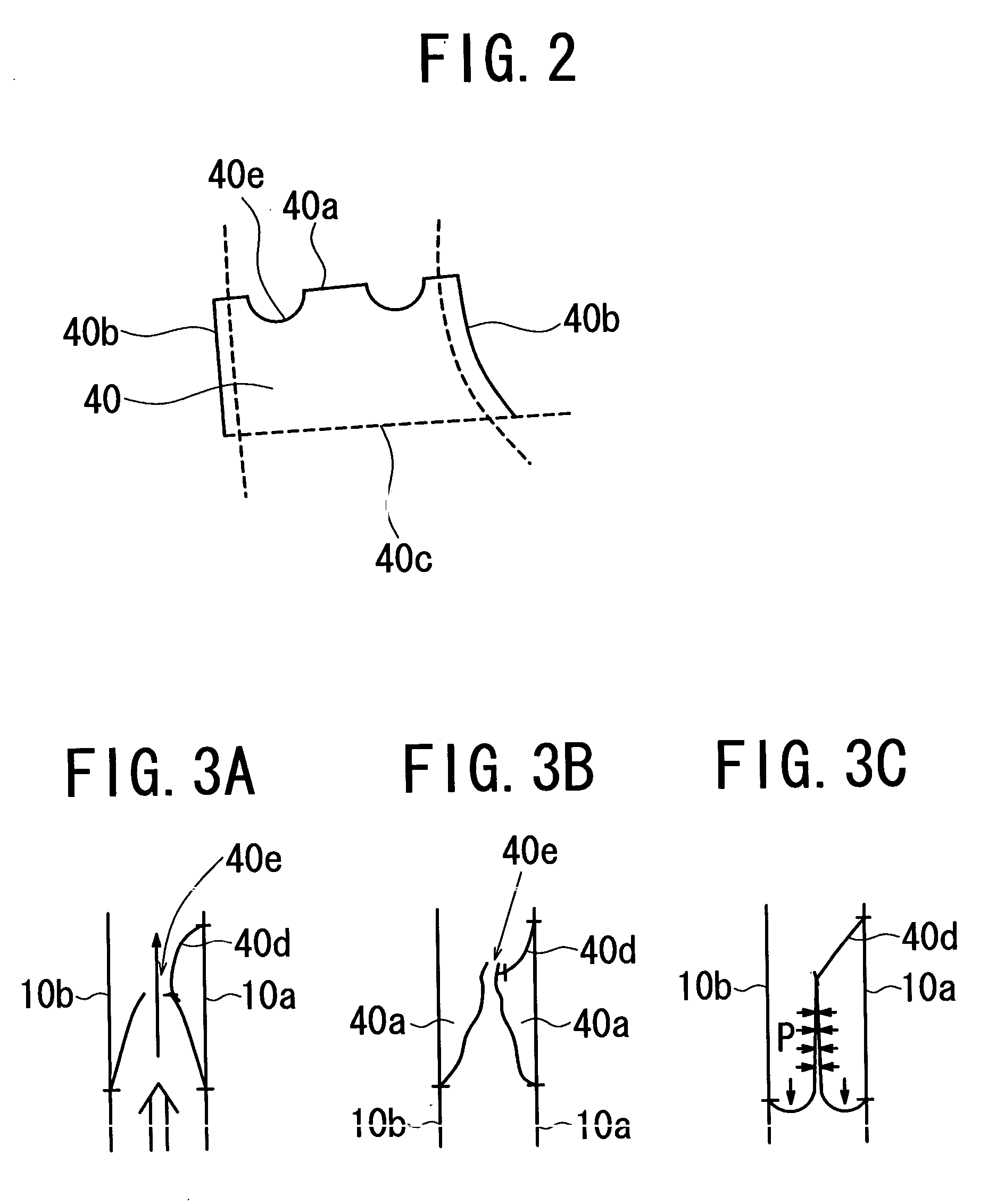Air bag device
a technology of airbags and air bags, which is applied in the direction of pedestrian/occupant safety arrangements, vehicular safety arrangments, vehicle components, etc., can solve the problems of occupants subsequently, failure to provide a satisfactory countermeasure, and the inability to differentiate between the upper airbag and the lower airbag, so as to prevent the pressure from abnormally rising, reduce fabrication costs, and quickly implement
- Summary
- Abstract
- Description
- Claims
- Application Information
AI Technical Summary
Benefits of technology
Problems solved by technology
Method used
Image
Examples
Embodiment Construction
[0039] An air bag device against a side collision as one embodiment of an air bag device according to the invention is described hereinafter with reference to the accompanying drawings.
[0040]FIG. 1 is a schematic sectional view broadly showing the whole makeup of the air bag device against the side collision.
[0041] As shown in the figure, an air bag 10 of the air bag device 1 is formed by sewing together base clothes 10a, 10b, on the top face side, and rear face side of the air bag 10, respectively, at a seam 10c along the entire periphery thereof, each being made of, for example, a synthetic fabric such as polyamide, polyester, and so forth, with a resin coating applied thereto, for common use in air bags. Further, the air bag 10 is divided along another seam 10d branching off from the seam 10c, at which the base clothes 10a, 10b, on the front, and back sides of the air bag 10, respectively, are sewn together, into a lower air chamber 12 for protection of the chest (or the waist)...
PUM
 Login to View More
Login to View More Abstract
Description
Claims
Application Information
 Login to View More
Login to View More - R&D Engineer
- R&D Manager
- IP Professional
- Industry Leading Data Capabilities
- Powerful AI technology
- Patent DNA Extraction
Browse by: Latest US Patents, China's latest patents, Technical Efficacy Thesaurus, Application Domain, Technology Topic, Popular Technical Reports.
© 2024 PatSnap. All rights reserved.Legal|Privacy policy|Modern Slavery Act Transparency Statement|Sitemap|About US| Contact US: help@patsnap.com










